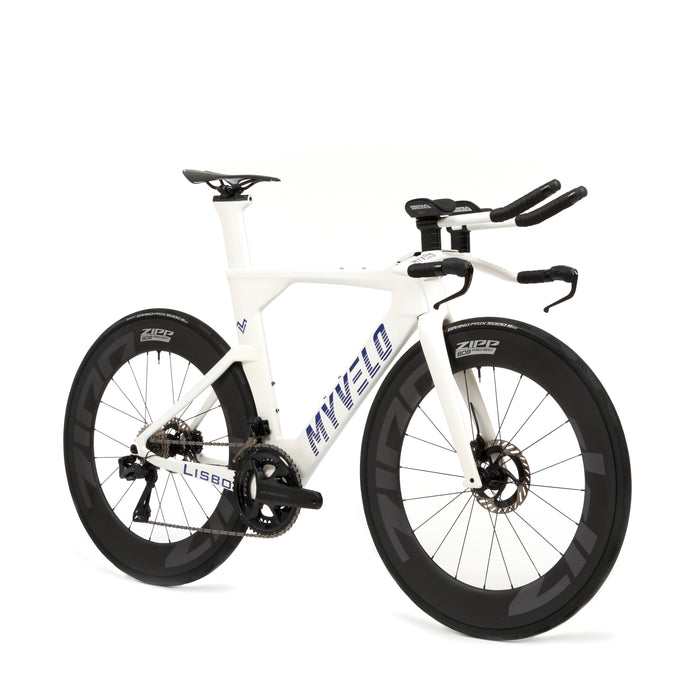
Lisboa triathlon bike
incl. FREE shipping & free returns

The Q-factor is a measure of the width of the pedal spacing on a bicycle. It refers to the horizontal distance between the crank arms that support the pedals. The further apart the cranks are, the higher the Q-factor.
A lower Q-factor generally means better ergonomics, as a narrower pedal spacing allows for a more natural pedaling technique and can result in less strain on the knee joints. A higher Q-factor, on the other hand, can result in greater strain on the knee joints and make cycling more uncomfortable.
The Q-factor is also an important factor when choosing cycling shoes. Most cycling shoes have a sole width that is tuned to a specific Q-factor to ensure optimal power transfer to the pedals.
The Q-factor varies depending on the type and model of bike. Mountain bikes usually have a higher Q-factor than road bikes because they have wider tires and a higher Q-factor allows for better handling on technical trails.
The term was coined by cycling author Grant Petersen in 1990 and has since become a recognized measurement.
The Q-factor can also affect cycling in several ways:
Overall, an optimal Q-factor can be different for each cyclist, depending on individual body size, pedaling technique and preferred riding style. It is important to adjust the Q-factor to individual needs and preferences when selecting a bike or when customizing the existing bike.

Fahrradpedale zu wechseln ist eine einfache, aber essenzielle Wartungsaufgabe, die jeder Radfahrer selbst erledigen kann. Ob für ein Upgrade, den Austausch abgenutzter Pedale oder den Wechsel zwischen Klick- und Plattformpedalen – mit der richtigen Anleitung gelingt der Wechsel problemlos.

Für Radfahrer, die ihre Fahrräder bequem transportieren möchten, bieten Fahrradträger eine praktische Lösung. Doch die Auswahl ist groß, und nicht jeder Träger ist gleich. Besonders bei der Wahl zwischen einem Träger für die Anhängerkupplung und einem Modell für die Heckklappe stellen sich viele Fragen. In diesem Artikel werfen wir einen Blick auf die beiden gängigen Typen und vergleichen ihre Vor- und Nachteile.

Die Kettenschaltung ist ein essenzieller Bestandteil des Fahrrads, der für eine reibungslose Kraftübertragung und effizientes Fahren sorgt. Wenn die Gänge nicht sauber schalten, schleift die Kette oder springt von den Ritzeln, kann das Fahrerlebnis erheblich beeinträchtigt werden. Mit ein paar einfachen Handgriffen lässt sich die Kettenschaltung am Fahrrad selbst einstellen.
The most frequently asked questions and answers